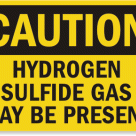This week BP announced plans to spend $1 Billion increasing production at the company’s Prudhoe Bay Alaska field. Years of declining Alaska North Slope (ANS) crude output have threatened state oil revenues and the safe operation of the Trans-Alaskan pipeline system (TAPS) that transports crude to the southern Port of Valdez. A new tax regime offers more upside potential to encourage producers like BP to invest. There is still a market for medium sour crudes like ANS on the US West Coast and in Asia. However Alaskan producers must overcome regulatory hurdles to compete successfully in these markets and competition for their drilling dollars from shale boom plays in the lower 48. Today we review the prospects for an ANS production renaissance.
Daily Energy Blog
The Energy East pipeline project proposes to convert part of the TransCanada Mainline natural gas system and add new pipeline in eastern Canada to connect oil receipts in Alberta with refineries in Ontario, Quebec and on the Atlantic seaboard. The proposal competes with existing plans by Enbridge to feed eastern Canadian refineries with light crude but does offer the prospect of supplying heavy crude for export from Canada’s East Coast. Today in Part 2 of a series on the project we review destination markets.
The Bentek Eagle Ford crude oil production outlook back in 2011 pointed to a four fold increase in production to 900 Mb/d over the five years to 2016. That number was actually achieved in under two years and today’s forecast calls for 1.5 MMb/d production by 2016. Those growth rates are remarkable enough but the super light nature of the crude being produced means much of it is better classified as condensate. The challenge for producers and refiners in Texas going forward is to find adequate markets for increasing volumes of condensate. Today we continue a series reflecting on the speed of change that shale production is dictating.
The TransCanada Energy East project proposes converting 1865 miles of the natural gas Mainline system and constructing 870 miles of new pipeline to deliver at least 500 Mb/d of crude oil to eastern Canada from Alberta. The pipeline conversion could solve two problems. It would bump up tariff revenues on the huge 7 Bcf/d Mainline that has been sucking air for years (it only moved 2.4 Bcf/d in 2012). And it would provide a route to Eastern markets for rising production volumes of landlocked Canadian crude. Today in the first of a two part series we examine prospects for this project.
Data from Genscape showing rail terminal loading volumes in North Dakota and pipeline receipts into the Enbridge North Dakota pipeline suggest that shippers are switching barrels from rail back to pipeline this month (May 2013). The apparent switching follows a narrowing of crude price differentials between coastal destinations and the Midwest from $17/Bbl in April to less than $9/Bbl last week. Today we ask whether narrowing differentials are driving a reduction in crude by rail shipments.
Recently there has been a spate of pipeline tariff filings to the Federal Energy Regulatory Commission concerning crude oil quality specifications for Bakken crude in North Dakota. While the immediate disagreement between pipeline company Enbridge and shipper Plains Marketing appears to have been resolved, it has highlighted an issue which has not received much attention until now. Today we detail the concerns.
Crude-by-rail has had a huge impact on the market for tank cars. Currently there are 53,000 tank cars on back order and more orders are coming in. That’s up from a backlog of 48,000 just a couple of months ago. The tank car manufactures are enjoying every bit of it but for the first time since the ethanol boom, they can’t keep up. In the old days it took 9 months to deliver a new car. Now, there is such a backlog that manufacturers can’t deliver a new car for 24 - 30 months. Today we will review the rapidly evolving tank car situation based on a recent presentation made by Travis Brock from Strobel Starostka, a construction and rail services firm deeply involved in in the crude-by-rail markets.
There is a bright future for crude by rail in the oil shale plays regardless of what happens to crude price differentials. That is because the flexibility of rail transport meshes well with the rhythm of shale oil development. Meantime Canadian heavy crude will be the focus for rail terminal development in the near term as continued pipeline delays force producers to look seriously at rail options. And the economics of raw bitumen by rail may end up undercutting pipelines. Today we look ahead to these trends.
Two years ago in June 2011 Bentek forecast that crude production in the Williston Basin would grow to 900 Mb/d by 2016. Today’s production in North Dakota and Montana is already at that level. What we are learning about US shale production is that it has been growing at twice the rate of every forecast out there. Today we begin a new series looking at what we are learning about the accelerating pace of North American shale production.
By Al Troner, President Asia Pacific Energy Consulting (APEC)
U.S. production of field (lease) condensates is growing like crazy, especially in the Eagle Ford. There is way too much of this material for it to be absorbed into traditional crude blending markets. At the same time the production of plant condensate, a.k.a. natural gasoline, is also increasing along with the yield of all other products from natural gas processing plants. A glut of condensates has developed and is getting worse. Clearly this is an opportunity for new market development, and the bizdev community is hard at work coming up with concepts, projects and proposals to use all of this material in the U.S. and in export markets. But there is a problem. Condensate markets in different geographies seem to have little in common with each other. It’s like walking through the looking glass. One term can have several meanings. One meaning can be ascribed to several terms. Today we launch a RBN blog series to make sense of it all.
Houston is getting swamped with crude that isn’t being consumed by area refineries. Light sweet crude prices are being discounted by up to $6/Bbl versus St James, LA. There is no pipeline capacity to move crude from Houston to Louisiana so it can only go by barge. The reconfiguration of terminalling and storage capacity on the Texas Gulf Coast to handle rising volumes of incoming crude more smoothly is underway but far from finished. Enterprise Product Partners (EPP) announced their latest expansion plans for their ECHO terminal earlier this month. Today we review progress on the Enterprise Texas crude network.
During the past two years the US domestic crude transportation business has been revitalized by a huge increase in shipments of crude oil by rail. In the Bakken region alone over 600 Mb/d of crude is shipped to market by rail. The number of rail terminals in producing regions loading crude oil onto rail tank cars has increased from a handful at the end of 2011 to 88 and growing today. A further 66 crude oil unloading terminals have been built or are under construction. Today we summarize the crude oil terminal build out by region and by railroad.
The proposed $2 Billion Kinder Morgan Freedom pipeline project is conducting an open season for shipper commitments from West Texas to California. The California refining market has long operated like an island within the US and has so far received few supplies from new domestic production. To proceed with the project Kinder need shippers to make long term commitments but today’s unsettled markets place a premium on flexibility. Today we conclude our two-part analysis of the chances that the pipeline will get built.
Kinder Morgan is conducting an open season to convert an El Paso Natural Gas pipeline to crude oil service from the Permian Basin in West Texas to California refineries. The ”Freedom Pipeline” project would cost as much as $2 Billion. Before going ahead they need to convince crude producers in the Permian and/or refiners in California to make long term commitments to the pipeline. Today we begin a two part assessment of the chances that this pipeline will get built.
Bakken gas flaring is still close to 30 percent of production. At the end of April the North Dakota State Assembly passed legislation providing tax incentives for producers to reduce flaring by finding alternative uses for gas that would otherwise be flared. Analysis by the North Dakota Pipeline Authority shows that 45 percent of flaring occurs from wells that are already connected to gas processing plants. Today we describe efforts to reduce gas flaring in the Bakken.




